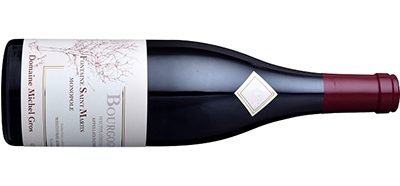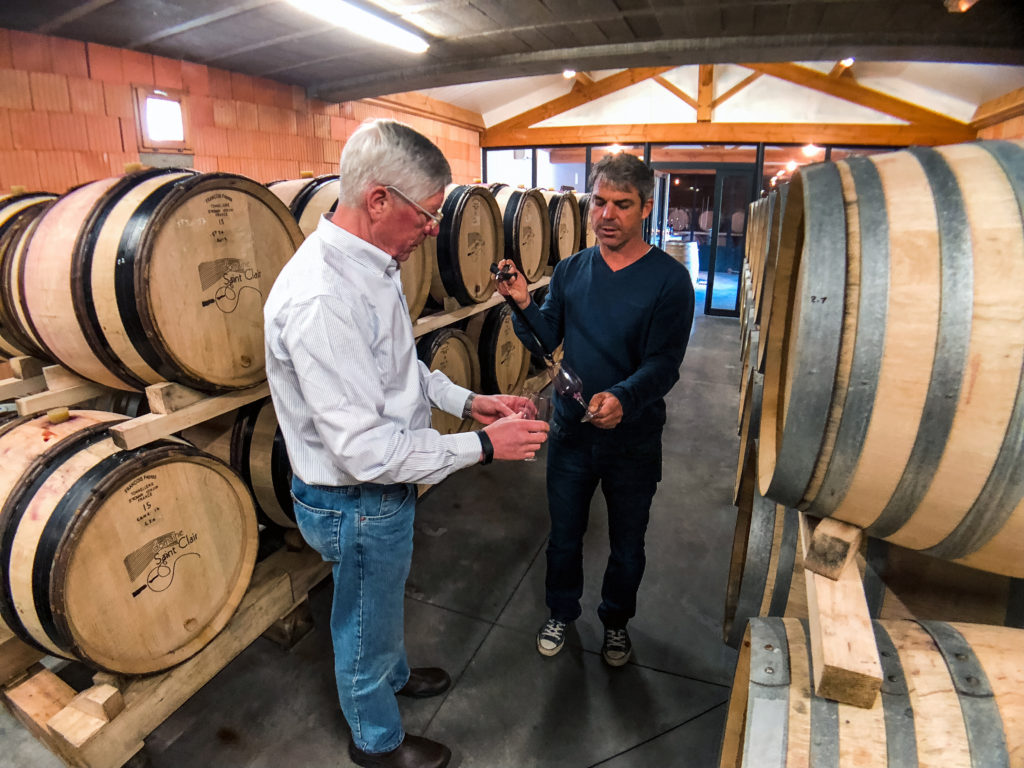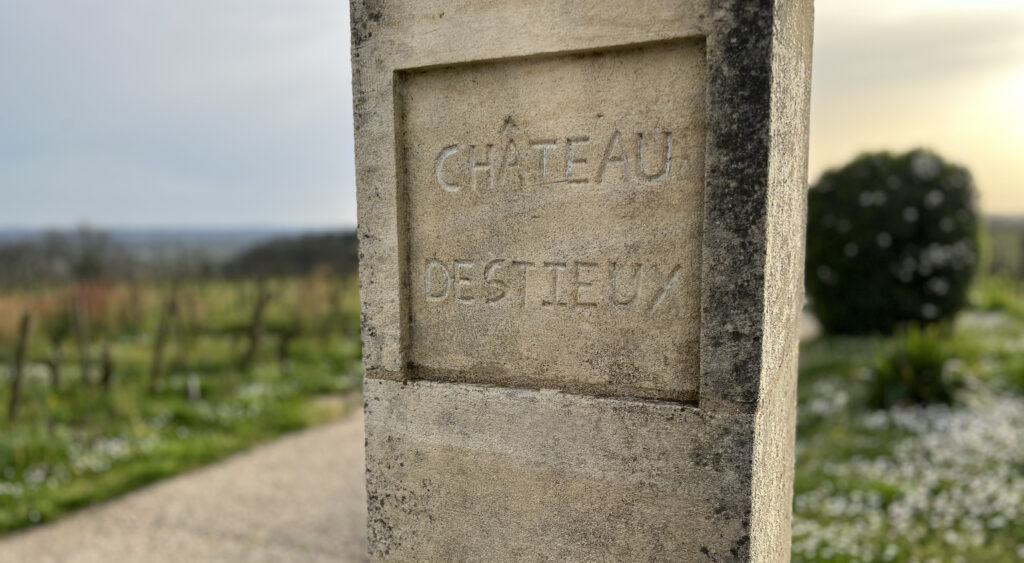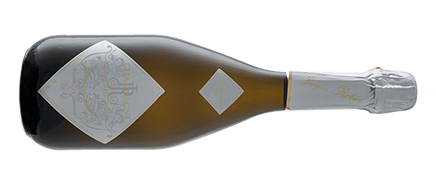It’s been a bumpy year in the wine business – tariff policy changing by the second, evolving consumption patterns, tricky weather across France, and governments on both sides of the Atlantic seemingly competing for awards in dysfunction. As with many sectors, the word “uncertainty” is top of mind. And yet the wine coming out of France has never been better. And in a world of simulations and digital experiences, wine is a refreshingly tactile product. It’s the handmade product of artisans practicing a craft that’s changed little in a thousand years. To engage in the wine supply chain – making it, transporting it, drinking it, sharing it – is a decidedly analog act. It’s about nourishment, pleasure, history, and face to face experience. It’s why we love what we do, and why (even more importantly) our winemakers love it too. November Futures offers a long list of delicious wines, from the remarkable to the reliable. As always there are the two anchoring lists from our best known producers: Michel Gros’s gorgeous 2023 reds from all across the Côte de Nuits, and Boyer-Martenot’s lush 2023 whites from in and around Meursault. Elsewhere in Burgundy we offer newcomer Arnaud Baillot’s terrific reds from Volnay and Pommard, and Nicolas Maillet’s amazingly well priced Maconnais whites. Outside Burgundy we source pure Syrah from Crozes-Hermitage, pure Cabernet Franc from Saumur-Champigny, pure Pinot Noir Champagnes from the Côtes des Bar, and Merlot blends from Saint-Emilion on Bordeaux’s right bank. Finally we introduce our newest producer: La Briccolina, a tiny and stellar new Barolo source. Wines are available by the case and half-case; and by the 3-bottle lot where noted with an asterisk*. Gros’s three Grand Crus are available by the bottle. If anything is of interest, please submit an order form by Sunday, November 16. We expect the wines to arrive in January/February. JUMP TO SECTION
Gros
Boyer
Baillot
Maillet
St-Clair
Sanzay
Destieux/Montlisse
Robin
Briccolina
November Futures
Order Deadline: 11/16
Domaine Michel Gros
Vosne-Romanée, Burgundy
The Domaine Michel Gros offers a one-stop opportunity to appreciate the remarkable complexity and nuance to be found in the red wine from Burgundy’s Côte d’Or. For more than 150 years, the family has owned the only premier cru monopole in Vosne-Romanée, a town celebrated as “the greatest Pinot Noir village on earth” in Clive Coates’s definitive work. Over the course of a 45 year career, Michel Gros enhanced the family’s wonderful collection of other vineyards across the Côte de Nuits: there are wines from Vosne, Chambolle-Musigny, Morey-St Denis, Gevrey-Chambertin, Nuits St. Georges, and the Clos Vougeot. In addition, Michel added to his father’s purchases of vines at the regional level, with vineyards in Bourgogne Hautes Côtes de Nuits and in Bourgogne Côte d’Or. Finally, as Michel handed the reins of the Domaine to his son Pierre, the Domaine added vines in two additional Grand Crus: Echezeaux and Richebourg. With such a large range of wines produced in the same style, a taster can see the clear impact of terroir and understand the magic of Burgundy. The wide range also offers a good look at the differences from vintage to vintage, and for many years we (and others) have used these wines as a benchmark. Happily, there is also a wide range of prices, with a bottle price for the least expensive wine that is one-tenth that of the least-expensive Grand Cru. Some of this fine domaine’s wine should be accessible to every wine lover. We begin our offering of the 2023 vintage with the Bourgogne Côte d’Or, featured in last Sunday’s opening post. Yield was naturally abundant across the vintage, and the domaine kept yields down through green-harvests during the growing season. The 2023 Bourgogne Côte d’Or is a pretty wine of medium weight, showing red currants and violets in the nose. Burghound found it “supple, succulent and round,” and we agree that the wine should drink well from the start. Up in the Hautes Côtes (an area of higher elevation just above the ridge at the top of the Côte), the Domaine offers three different blends. In addition to the cuvée labeled “Bourgogne Hautes Côtes de Nuits,” there is a cuvee from a parcel called “Au Vallon” and one from the “Fontaine St. Martin” monopole. For this vintage, Burghound marked both the regular cuvée and Au Vallon with his symbol meaning “particularly outstanding in their respective appellations.” The regular Hautes Côtes cuvée offers notes of cherries and raspberries. Burghound found “both good volume and vibrancy to the delicious middle-weight flavors, and indeed the wine has pleasant freshness and will begin drinking well before long. “Au Vallon” is a parcel that faces full south, and the sunny orientation always brings a bit more ripeness and roundness to the wine. We find that it becomes accessible sooner than the regular cuvée. The cuvée from the monopole Fontaine St. Martin is bigger and more serious, requiring a little more time to round out but offering greater intensity and length in the long run. Burghound praised its “perfumed and very pretty nose” and its “sleek, delicious and refined flavors.” This is among the best years of this wine we can remember. In Nuits St. Georges the Domaine has two cuvées, one from the “Chaliots” vineyard to the south of the town, and one from a collection of parcels from the northern sector that adjoins Vosne-Romanée. When we tasted from the barrels last March, Chaliots was showing particularly well, with ripe dark fruit, good concentration and excellent balance. There is often an umami note in Nuits St. Georges, and Chaliots offers that clearly – in 2023 it’s joined by cinnamon, licorice and violets.. Burghound praised this vintage’s “elegant” nose and “beguiling texture,” and some of the 2023 Chaliots will definitely be going into our personal cellars. The other wine from Nuits St. Georges is from a number of parcels on the side of the village that adjoins Vosne-Romanée, and so is simply labeled “Nuits St. Georges” without a particular parcel name. Here hints of the famous Vosne spice always show up in the nose, and the impression is of elegance more than meatiness. The fruit is dark cherry and blueberries. Because Nuits is larger than most of the Côte d’Or villages, there is also more wine and that makes pricing more affordable. On the northern side of Vosne, the domaine has small parcels in two towns. In Morey St. Denis there is a plot on the upper part of the slope in the vineyard called “En la Rue de Vergy”, a reference to the path to an ancient abbey just over the ridge of the Côte. Of all the village-level wines of the domaine, this is usually the first to hit its stride, and in 2023 it is beautiful — elegant and fine in the mouth. Burghound found “ripe, cool and airy aromas comprised by notes of wild cherry, raspberry, cherry, earth and subtle spice nuances.” En la Rue de Vergy adjoins three Grand Crus (Bonnes Mares, Clos des Lambrays, and Clos de Tart), so its complexity is not surprising. The village Gevrey-Chambertin “La Platiere” is a recent addition to the portfolio. It tends more than most wines of the village to elegance rather than power, but still shows Gevrey’s unmistakable burliness. In 2023 it offers good freshness with fine tannins and a deep, sappy palate. Notes of toasty oak play nicely against the fruit and earthy elements in the wine. With a bit of time in the cellar it will integrate and round out. These days the towns of Vosne-Romanée and Chambolle are maybe the most praised and sought-after in the Côte d’Or. As Jasper Morris MW put it in his definitive work Inside Burgundy, “No other appellation in Burgundy can combine the intensity of flavour with the refinement that typifies the fine wines of Vosne-Romanée.” In 2023 the domaine produced excellent wines in both towns. The village Vosne was particularly expressive from the barrel last March, with lovely floral and spice notes showing against the toasted oak. In the mouth there is both length and elegance that lingers on the palate — the wine should really be quite special before long. Morris called it “lovely…pure and delicious… fruit is impeccable and very long.” The domaine’s Chambolle is made in large part from a village parcel that adjoins the great Grand Cru “Musigny,” and shows a density and structure more like a premier cru than a village wine. It needs just a little more time to hit its stride than most village Chambolle, but always pays keeping, with a refined palate of ripe black currant fruit that persists in a long and lovely finish. The 2023 was particularly serious, beautifully sculpted and reaching a new level of refinement for the cuvée. At the special occasion level the Domaine Michel Gros has an embarrassment of riches, with some of the finest premier and grand crus to be found in Burgundy — particularly with the recent addition of substantial parcels in the Grand Crus Echezeaux and Richebourg. The Nuits Saint Georges premier cru is often the sleeper among Gros’s special occasion wines. Produced in very small quantities from very old vines that tend to yield much millerandage (tiny “shot berries” that give juice of particular density), these are intense wines with long lives. The 2023 is dark and masculine with a dense, chewy, delicious mouth that will require cellaring. Neal Martin of Vinous calls it “quite a powerful Nuits-St-Georges.” Lacking the particular cachet of the Vosne or Chambolle names, the Nuits premier cru is very attractively priced. Gros’s two Vosne premier crus are exceptional every year, and 2023 is no different. The vines in Aux Brûlées are well located — very near the Grand Cru Richebourg — and they produce big wine but with remarkable poise. This is classic Vosne-Romanée, capable of long aging, but impossible to spit out even young. The 2023 is as good as ever, with an enticing spiced nose, and very fine tannins across an inky, raspberry-laden mouth. Morris gave 92-95, citing “a heavenly perfume like the village, but more intense.” As for the monopole Clos des Réas, Morris gave it his highest rating 5-stars, awarding 94-96 points, and concluding “this is extremely impressive.” Neal Martin similarly writes “one of the best wines from the domaine in 2023.” We also had a big star next to this one in our notes, so weren’t surprised by Jasper’s or Neal’s enthusiasm. Réas sits on a deep layer of salmon-colored marl, which gives it a plush softness that means it’s always delicious, young or old. The 2023 is particularly well balanced and built, and while we haven’t had a disappointing vintage of the wine yet, this one is special. The Gros portfolio now includes three Grand Crus. The first is from a small plot in the Clos Vougeot, in the Grand Maupertuis sector — the very best part of that huge Grand Cru vineyard. Michel was given this plot as a child, and reports having hoped for a bicycle instead. (We suspect his view on that subject may have changed.) His vines in the Clos Vougeot always offer rich, deeply colored wine that requires a few years to knit together. But it is already clear that the 2023 vintage is a very nice one. Burghound commented on its “unusually perfumed nose,” and we see all the elements we have come to expect from it: an excellent match between ripe dark fruit and toasty oak, accompanying notes of minerals and earth, and long persistence on the palate. We have only a few years experience with the Echezeaux “Loächausses,” but what we have seen is very promising. Burghound called it “seductively textured, rich, round and plush,” and we agree. There is plenty of inky, dark fruit mingled with mineral nuances, as well as the signature Gros toast in its oak. It’s extremely long but very carefully channeled, with not a hair out of place. We have high expectations for this wine as it develops over the coming decade. Richebourg Grand Cru is among the most celebrated vineyards in Burgundy, just a tick behind its near neighbor Romanée-Conti, and the Domaine Michel Gros’s Richebourg is an excellent example. Burghound thought that it “possesses the spiciest nose in the range with a wonderfully broad-ranging array of red and dark cherry, exotic Asian-style tea and a similar whiff of oak toast.” That’s a mouthful, but so is the wine. It has an astonishing degree of layers, almost like several wines mixed together into one. If the village wines are solo instruments, and the premier crus are a quartet, this is a full symphony. It’s easily as good as the 2022, and might even be better. It’s one to put at the back of the cellar for at least a few years, and then to bring it out for special occasions for many decades. Finally, the domaine makes a single white wine, Chardonnay from vines in the Fontaine St. Martin, the monopole in the Haute Côtes that produces the domaine’s red of the same name. It’s very nice in 2023, with just enough freshness and very good length. The ripe fruit blends well with the oak and a pleasant lemon peel note adds interest. This is a vintage to drink young, and holds its own against its better known neighbors from the Côte de Beaune.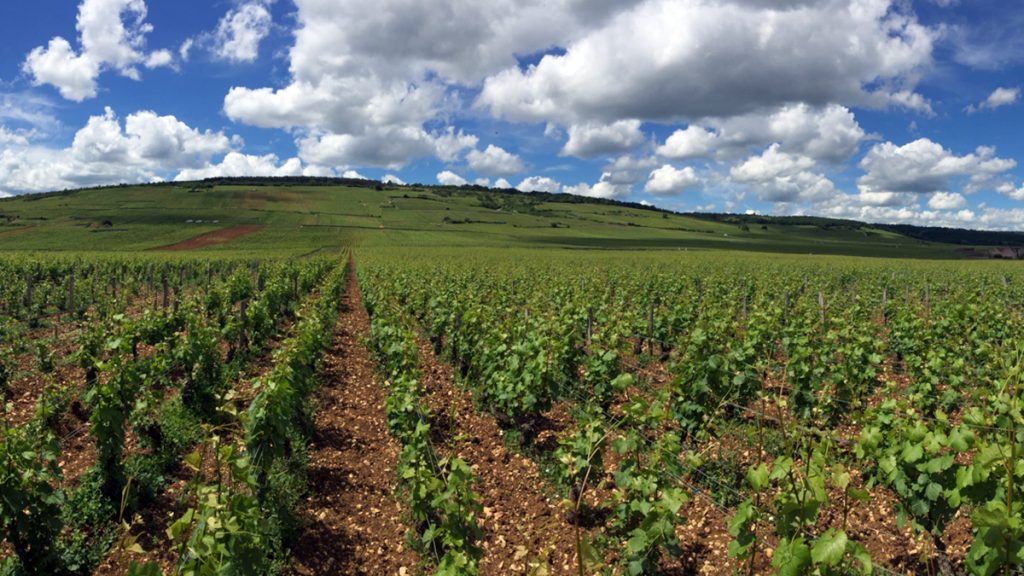
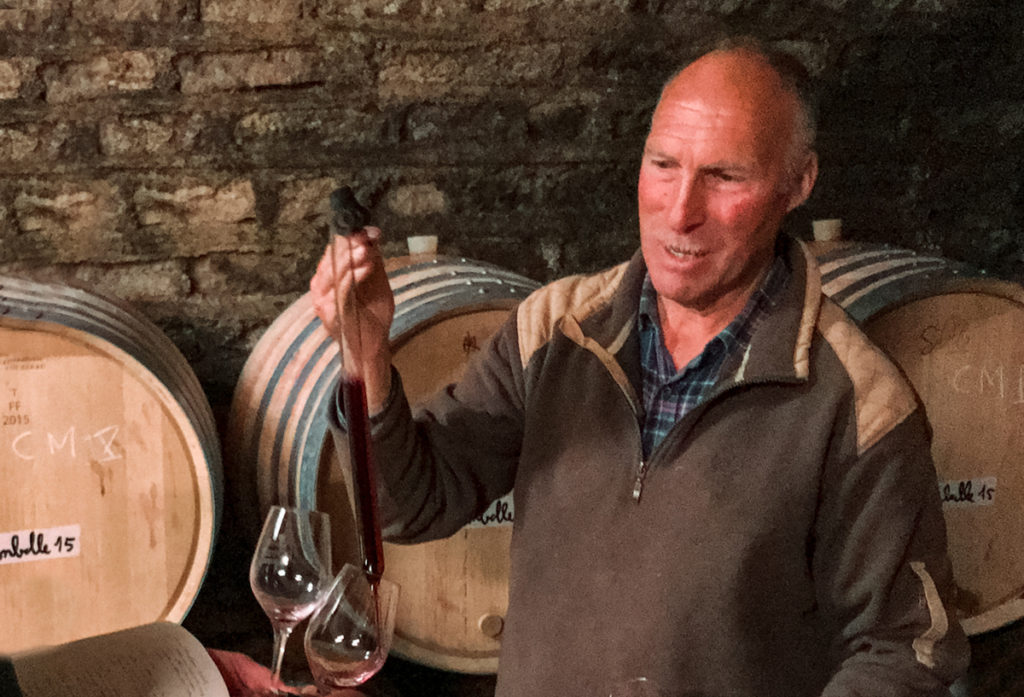
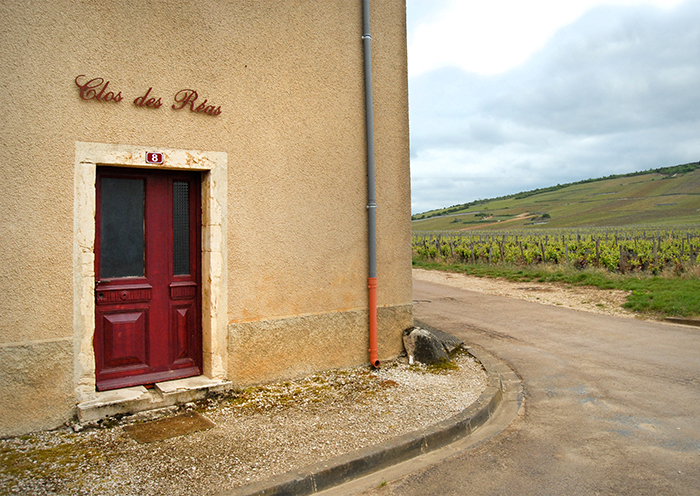
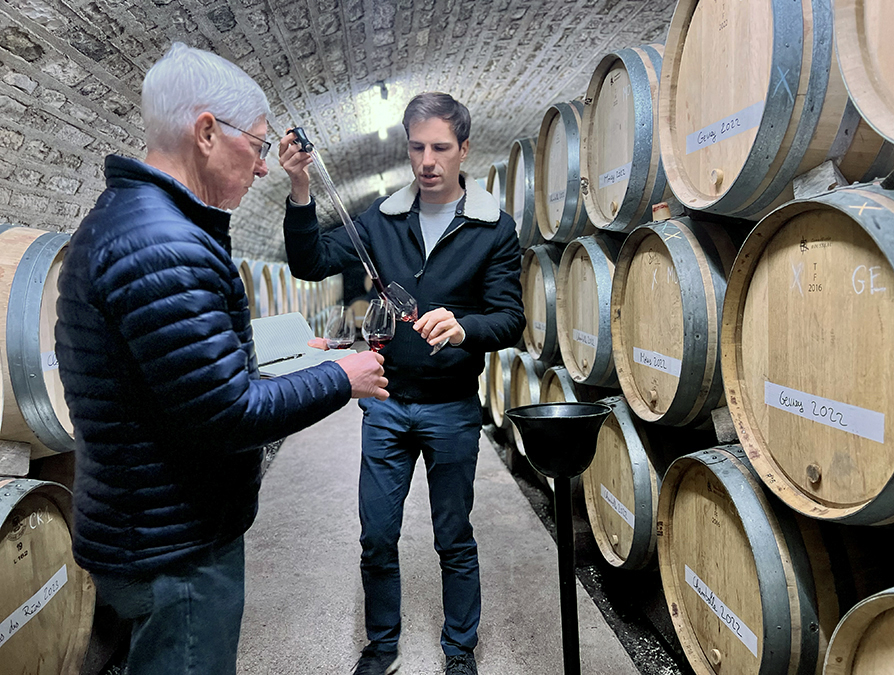

(case prices)
Bourgogne Côte d’Or 2023
$350
Hautes-Côtes de Nuits 2023
$395
HCDN Au Vallon 2023
$425
HCDN Fontaine-St-Martin 2023
$450
Nuits-St-Georges 2023
$795
Nuits-St-Georges Chaliots 2023
$850
Gevrey-Chambertin 2023
$895
Morey-St-Denis 2023
$895
Vosne-Romanée 2023*
$1,295
Chambolle-Musigny 2023*
$1,295
Nuits-St-Georges 1er 2023*
$1,395
Vosne-Romanée 1er “Aux Brûlées” 2023*
$1,995
Vosne-Romanée 1er “Clos des Réas” 2023*
$1,995
Clos Vougeot Grand Cru 2023 (bottle price)
$295
Echezeaux Grand Cru 2023 (bottle price)
$395
Richebourg Grand Cru 2023 (bottle price)
$925
HCDN Fontaine-St-Martin blanc 2023
$450
Boyer-Martenot
Meursault, Burgundy
We spend lots of time hunting for value in the lesser known regions of Burgundy. And it has paid off – recent discoveries in Givry, Pouilly-Fuissé, St-Aubin, etc. have become some of our favorite sources for Pinot Noir and Chardonnay. They offer ready drinking and friendly price tags. But then we get back to the Côte d’Or. A few sips of Meursault or Puligny and we’re immediately reminded why the wines from these towns have been the focus of wine lovers for centuries. There’s just no way to simulate these terroirs – they are Mecca for those bitten with the white Burgundy bug. There may be flat out delicious alternatives from other corners of Burgundy, but nothing tastes quite like these wines. Vincent Boyer somehow continues to fly a bit under the radar of much of the international wine press. (You won’t find us shedding a tear over this, as his prices too are less than his peers’.) He’s an insiders’ producer with a mouthwatering collection of terroirs; together with his sister Sylvie who handles much of the viticulture, they continue to turn out magnificent expressions of their unparalleled terroir. Boyer’s 2023s are simply delicious – juicy and fleshy and approachable, but with excellent tension and low alcohol. They’re modern white Burgundy at its finest, and the whole lineup is warmly recommended. Boyer’s two regional wines are terrific as always. His Aligoté transcends the grape’s humble reputation, offering real white Burgundy with a middle weight palate and excellent concentration. Boyer elected to use foudres (huge oak barrels) this year instead of eggs, and while you won’t find any toasty notes in the wine, there’s a beautiful weight and length. The 2023 is more floral than usual, and exceptionally pretty. The Bourgogne Côte d’Or comes from vines around Meursault, and shows its village of origin. The nose is lovely and sophisticated, with sweet yellow fruits and a savory element. The mouth is dry and firm with terrific length and excellent energy. It’s unusually serious this year – tasted blind you might guess a village St-Aubin. Meursault is a large town with diverse terroirs, and it has long been the standard to bottle even village-level plots individually. Boyer’s two village-level Meursaults are all the proof you need of his strategy – they are a yin and yang, both delicious, and we’re only glad we don’t have to choose between them. Ormeau is classic, old-school Meursault. Grown from 100+ year old vines planted by Vincent and Sylvie’s grandmother between the wars, Ormeau comes from clay-rich soils that provide tremendous depth and richness. The 2023 Ormeau is lush and beautiful, with abundant yellow fruit shot through with a spine of acidity. It’s rich and fresh and charming – when you think of Meursault, you think of this. Narvaux, Boyer’s other village level plot, is considered among the best in the town, in some years at near premier cru level. Boyer’s Narvaux does not disappoint – it’s impossibly fine, with a deep floral nose and gorgeous, almost Puligny-like minerality. There’s plenty of Meursault richness of course, but all finely channeled into a sophisticated white flower package. Every bit a Narvaux. In Puligny, Vincent and Sylvie farm a small village level plot just north of town in Reuchaux. It’s on the flat and so prone to damage from spring frosts that the Boyers installed (at substantial cost) heated cables along the rows which they can turn on to raise the ambient temperature when needed. It’s a tricky plot in an unusual spot, but the wine it produces is exceptional. The 2023 is the best we can remember, and we only wish there were more to go around. The nose is exquisite, a mixture of stones, pear, flowers and flax. The mouth is classic Puligny – chiseled and fine – but with unusually attractive weight this year. It has the concentration and acidity to last at least a decade but will be extremely charming from the get go. If you’ve never tried this cuvée, this is the year to give it a shot. At the premier cru level Boyer’s portfolio is an embarrassment of riches. Meursault has no grand crus, but rather three undisputed top premier crus: Charmes, Genevrières, and Perrières. Boyer has vines in each, and then an extremely rare plot in a Puligny premier cru to boot. Meursault 1er cru “Charmes” is often the most opulent of the trio, and 2023 is no exception. The nose is deep and bursting with fresh flower and white spice perfume; it’s a noticeable jump in expressiveness from the village cuvées. The Meursault Genevrières 2023 was the most impressive on the day of our tasting: impossibly long, tightly coiled and magnificently polished. The nose shows gardenias and lilacs; the mouth is smooth sleek with an endless finish. There’s acidity to carry this well past five years, but it’s a stunner today. Finally Perrières, the “eternal Grand Cru in waiting,” to quote Rajat Parr. The nose is dry and exquisite with sweet cream butter and a pleasant reductive note of dried flowers. The palate is deeper and lower toned, with an extraordinary stony concentration. This will require several years to reach its potential, but we have no doubt it will be spectacular when it does. Lastly, Puligny-Montrachet 1er cru “Cailleret” – a tiny five-owner premier cru just stone’s throw from the Grand Cru Chevalier Montrachet. This wine blew us away in March. Dark yellow fruit joins a savory limestone nose with a splash of salinity. In the mouth it’s extremely Puligny, intensely concentrated and very fine. This simply regal white Burgundy, as good as any we’ve had in years.
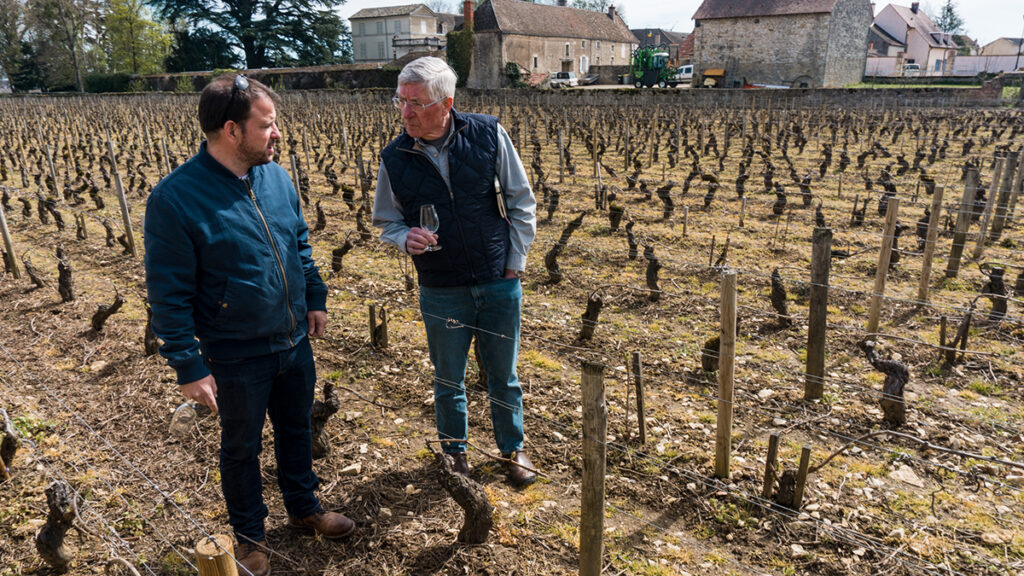

(case prices)
Aligoté 2023
$295
Bourgogne Côte d’Or 2023
$350
Meursault Ormeau 2023
$895
Meursault Narvaux 2023
$895
Puligny-Montrachet Reuchaux 2023
$1,095
Meursault 1er Charmes 2023*
$1,795
Meursault 1er Genevrières 2023*
$1,895
Meursault 1er Perrières 2023*
$2,195
Puligny 1er Cailleret 2023*
$2,995
Arnaud Baillot
Beaune, Burgundy
Last year we introduced Arnaud Baillot, a winemaker we met in a bar in Beaune. He’s a bit of an anomaly in Burgundy, a new arrival with little winemaking experience and no family history. He started just 10 years ago as a micro-negociant, purchasing grapes and making tiny batches from small plots. In the last decade he has acquired 10 hectares of vines around the Côte d’Or, farming organically and crafting beautiful, understated modern Burgundy. We were quite taken with Arnaud’s wines, and have gotten similar feedback from readers. Vinous’s Neal Martin visited this year and was also impressed. He describes Baillot’s wines as “excellent,” “impressive,” and “lovely and energetic,” even going as far as comparing him to Marquis d’Angerville, a legendary and iconic source in Volnay. We’re delighted to offer even more cuvées this year. Baillot’s Bourgogne rouge Côte d’Or is excellent again this year. Coming from vines in Volnay and Pommard, it’s half-destemmed and clocks in at a fresh 12.5% abv. The nose is delicate and clean with notes of strawberry and a bit of spice. The mouth is lightweight and vibrant with a pretty stoniness among the red fruits. Neal Martin found “red cherries…quite vivid and bright” with a palate that’s “medium-bodied with crunchy red fruit…it works well.” At the village level, Baillot’s Volnay was a hit last year, and this year’s is just as good. It’s again made with 50% whole cluster fermentation, adding a beautiful textural backbone to the fruit. The nose is dark and spiced with gorgeous plum fruit. The mouth is extremely elegant and fine-grained, with great density and a finely channeled mineral finish – classic Volnay in fruit profile and texture. Martin found “an attractive, finely delineated bouquet…quite floral,” and in the mouth “nicely structured and quite persistent,” concluding “this is a well-crafted Volnay that comes recommended.” Leaving Volnay for a moment to visit its nextdoor neighbor, Baillot’s Pommard 1er cru “Charmots” was delicious at our tasting in March. As you’d expect it’s darker and fuller bodied than the Volnays, but without losing Baillot’s signature elegance and refinement (helped along by 80% whole clusters). The nose is deeply perfumed with spices, redcurrants, and tea. The mouth is dark and bold but with tremendous freshness. Martin awarded 92 points, writing “This is an excellent Pommard that should give a decade of drinking pleasure. Excellent.” Finally, we return to Volnay for Neal Martin’s (and our) favorite of Baillot’s cuvées this year – the Volnay 1er cru “Mitans.” This one is 100% whole cluster, dark and beautiful with remarkable detail. The nose shows wild cherries, clay and a hint of soy sauce; the mouth is intense and very long but perfectly balanced. Nothing is overdone, nothing out of place. Martin awarded 93 points, finding it “refined and focused” and concluding “This is not a million miles away from d’Angerville in style, so yeah, it’s that good.”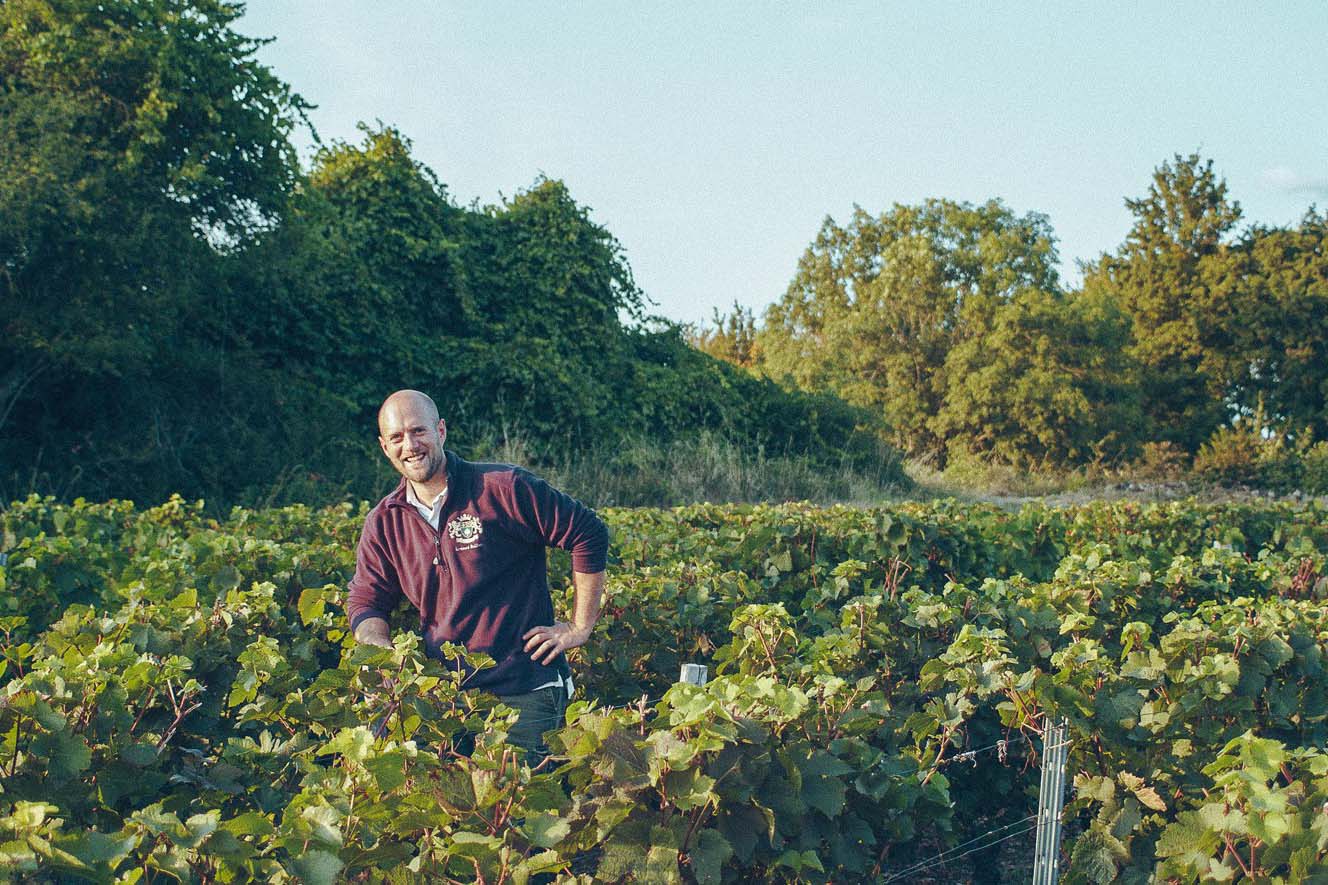

(case prices)
Bourgogne Côte d’Or rouge 2023
$395
Volnay 2023
$795
Pommard 1er Charmots 2023
$1,095
Volnay 1er Mitans 2023*
$1,195
Nicolas Maillet
Verzé, Maconnais, Burgundy
About a decade ago, when it appeared that we would no longer be able to buy wine at the Domaine Guillemot-Michel, we asked if they could recommend another producer from their part of the Maconnais with similar standards and style. They sent us to Nicolas Maillet in the hamlet of Verzé just down the road, and we have been buying there ever since. His style is indeed very much like theirs: organic and biodynamic to be sure, but also wine that is strikingly pure and clean, with fruit front and center and no oak to get in the way. Both 2023 Maillet wines are excellent. The Macon-Villages 2023 offers a glass of delicious, refreshing, lemony fruit. The wine is of medium weight, very nicely balanced, and very attractive across the palate. It will match up well with any sort of seafood, particularly shellfish, but also a wide range of other dishes, from cheese fondue to roast chicken to veal scallops in almond butter. The Macon-Verzé 2023 is a step up in concentration and complexity. There is more density, along with a fantastic flavor profile with notes of tangerine, honeysuckle, green tea and more.In the mouth it is terrific, with plenty of richness but also a lively freshness. Enjoy with or without food — there’s enough going on in the glass to stand all by itself.
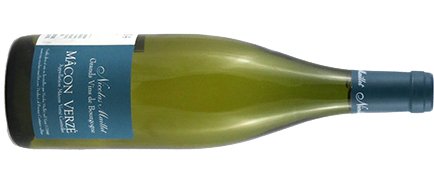
(case prices)
Mâcon-Villages 2023
$295
Mâcon-Verzé 2023
$350
Domaine Saint-Clair
Crozes-Hermitage, Northern Rhône
Denis Basset produces delicious all-Syrah red wine in Crozes-Hermitage, the modest close relation of the superstar appellations of Hermitage, Côte Rôtie and Cornas. Happily, the pricing is decidedly also modest, and over a decade or so the Domaine Saint Clair has developed a loyal following among friends of Ansonia Wines. As you have heard us say before, the greatest expression of any grape comes at the northern end of its range. That explains the Northern Rhône, where Syrah makes superb reds without an assist from Grenache or other red grapes from farther South. The big name appellations are tiny and their prices the inverse, but Crozes-Hermitage continues to offer a great combination of quality and price. The Domaine Saint Clair’s base cuvée is Étincelle, raised partly in vats and partly in barrels. The 2023 vintage is a worthy successor to the excellent 2022. It has plenty of freshness and very good ripeness of fruit. Aromatically, there’s a pleasant note of clove mixing with Syrah’s dark fruit and graphite. The wine was just bottled in July, and can be expected to take on weight and roundness in the coming months, after which it will provide much pleasure over the next few years. Saint Clair’s old vine cuvée is called “Fleur Enchantée.” It’s more serious and ageworthy than Etincelle and raised entirely in oak barrels. The 2023 Fleur Enchantée is delicious, with plenty of density and concentration. There’s a touch of menthol mingling with the fruit, and at 13% alcohol, the balance of the wine is perfect. You can start sampling this right away, but over the next year or so it will add some velvet in the mouth and complexity in the nose, providing plenty more pleasure over the next five years or so. Basset has a small plot in St. Joseph across the Rhône on a hillside so steep and hard to work that he named the cuvée “Les Abimes de l’Enfer” (the Abyss of Hell). St. Joseph is a sort of junior version of its next door neighbor Cornas. It is a bigger wine than the Crozes, with more tannins and more time to its peak, but it also provides excellent value, and we regularly open one for a mid-week meal when we want a hearty red with some character. The fruits are darker than the Crozes with notes of fig, blackberry jam, spice and pepper. Basset’s white Crozes-Hermitage “Un Matin” has an enthusiastic following, not only among Ansonia clients but among restaurants in his region. In fact we had to wait a few years before we were allocated any, so popular is the wine among local restaurateurs. It is easy to see why: “Un Matin” is an aromatic and expressive blend of Marsanne and Roussane that recalls Condrieu in its unctuous texture and exuberant nose. To maintain freshness, Denis planted additional Marsanne about five years ago, and those grapes, raised in stainless steel, are now finding their way into the wine. The Roussanne gets about seven months of aging in oak barrels, which provides the roundness and gras (“fat”) that makes the wine so appealing as an aperitif. The final blend is a delicious combination of 55% Marsanne and 45% Roussanne. It’s a versatile wine that is perfect to bring out before dinner for a friend who might be tired of the usual suspects.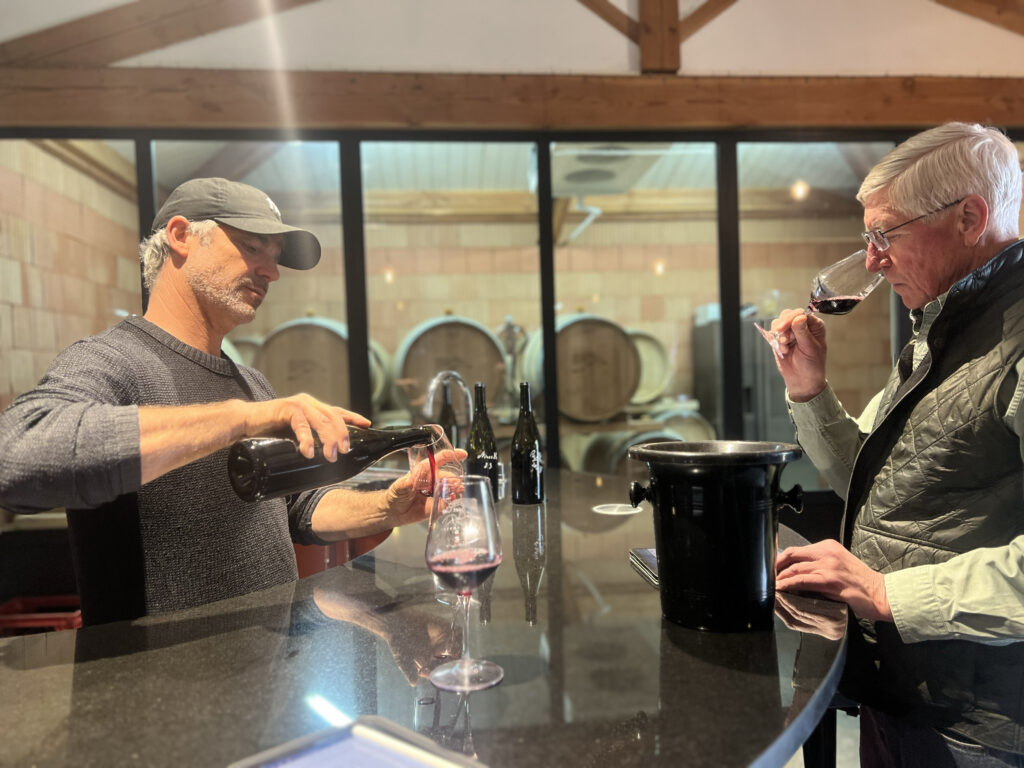
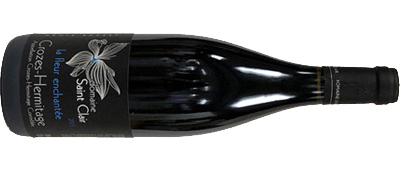
(case prices)
Crozes-Hermitage “Étincelle” 2023
$250
Crozes-Hermitage “Fleur Enchantée” 2023
$295
St-Joseph “Abîmes d’Enfer” 2023
$350
Crozes-Hermitage blanc “Un Matin” 2024
$295
Domaine des Sanzay
Saumur-Champigny, Loire Valley
The Loire Valley continues to be one of the most exciting corners of winemaking in France. Organic viticulture, balanced wines, and affordable prices are the rule here rather than the exception. We find ourselves reaching for Loire reds often these days, whatever the occasion – they’re characterful, refreshing, complex and downright tasty. Our source for these delicious reds is the Domaine des Sanzay, a fifth generation organic domaine in Saumur-Champigny in the central Loire. Their unblended Cabernet Franc wines have become highly popular in our warehouse, opening tasters’ eyes to a new expression of the grape. The 2024 Saumur Champigny is fresh, juicy and beautiful. The nose shows cranberry and spring flowers, and no oak (it’s fully raised in tank). The mouth is crackling and refreshing with a quick clean finish and low alcohol. This cuvée is always easy to like, but the 2024 is particularly lively and gulpable. Drink on its own, particularly in the springtime, or with a pizza. The Saumur-Champigny Vieilles Vignes spends a year in big barrels, so the current release is the 2023. It’s darker and more serious than the regular cuvée – the old vines bring concentration and depth of flavor. After years of hot dry vintages, the Sanzays told us 2023 was a return to “true Loire reds,” with low alcohol and excellent balance. The old-vine cuvée lasts far longer on the palate, with more supporting tannin. The nose is dried roses and wild cherries; the mouth is dark and rugged with earthy notes and a delicious saline finish. Serve with mushrooms. This year we loved Sanzay’s “Beauregard” parcellaire cuvée. It sees 18 months of elevage, and draws concentration from its sand-limestone soils. The nose is beautiful, deep and spiced, with notes of peony and graphite over the wild cherry fruit. The mouth is fine grained and concentrated with perfectly balanced tannin and a clean, dry finish. (We’re not sure whether the Sanzays would consider this a compliment or not, but it reminded us of a Burgundian Pinot Noir.) Whatever you call it, it dramatically outperforms its $25 billing; we’d happily list it on our site for $50. Decant for a half hour and serve with stews or duck or steak.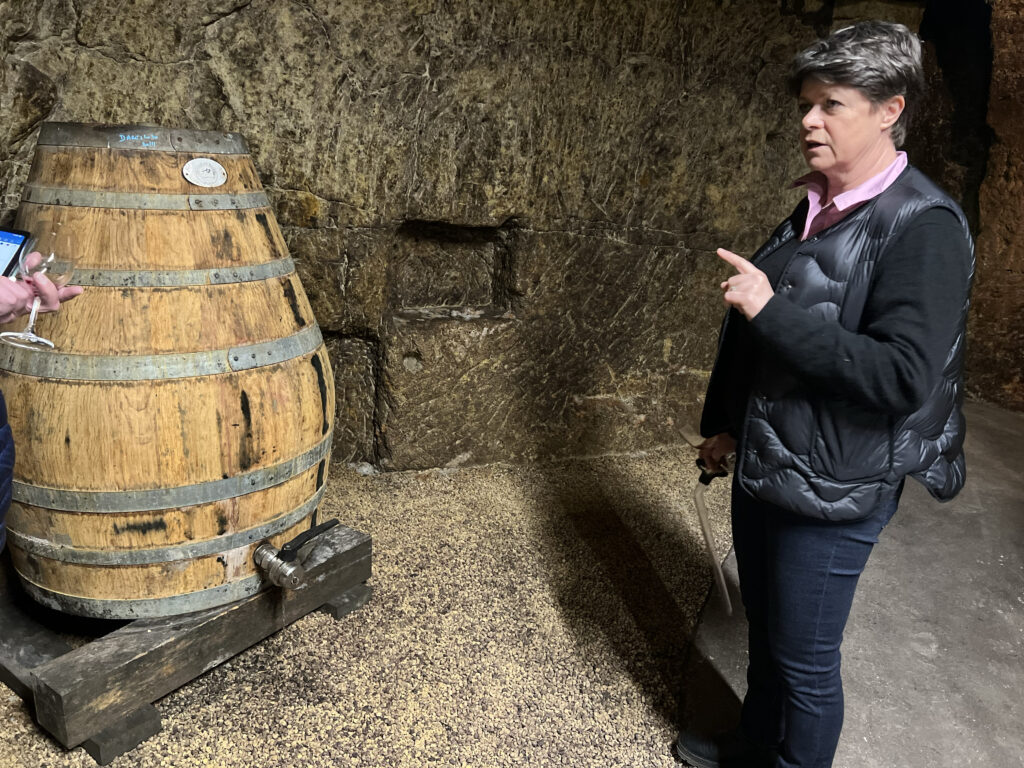
(case prices)
Saumur-Champigny 2024
$195
Saumur-Champigny Vieilles Vignes 2023
$250
Saumur-Champigny “Beauregard” 2022
$295
Montlisse & Destieux
St-Emilion, Bordeaux
We have been buying wines from Christian Dauriac, the owner of three fine properties on Bordeaux’s right bank, for a quarter century. Over that time we have seen both Château Destieux and Château Montlisse elevated from St. Emilion Grand Cru to St. Emilion Grand Cru Classé. The winemaking has always been excellent, but recognition has arrived more slowly – Destieux was awarded “Grand Cru Classé” in 2006 and Montlisse just recently, in 2022. Last year we offered 2019s from both properties – an exquisite year in Bordeaux where just about everything went right. Fruit, tannin and freshness are all in balance, and with the wines celebrating their 6th birthdays, many are starting to show the benefits of time in the bottle. We were delighted to find both still available at the chateau, and so are re-offering both. We’ve also thrown in a 2016 for good measure. Chateau Montlisse will be elevated to Grand Cru Classé status in 2022, a recognition of what we’ve always felt was an overperforming wine. It’s 85% Merlot, with 7.5% each of Cabernet Franc and Cabernet Sauvignon. The 2019 is delicious, and has blossomed over the last 5 years. It’s an easygoing wine, with middleweight tannin and lively freshness behind the lush, dark plum fruit. Vinous’s Neal Martin awarded 92-94, finding “fine grained tannin, well judged acidity,” and “nicely integrated oak,” and concluding “this is a classy offering from Montlisse.” Château Destieux is the flagship Dauriac property. It lies along the highest ridge in St. Emilion, and includes significant amounts of both Cabernet Franc and Cabernet Sauvignon along with the dominant grape, Merlot. The 2019 is strikingly good. Its sweet, perfumed nose is open and expressive; it fills the mouth, but also shows excellent balance and length. This Destieux offers much enjoyment today, and we think it will continue to age very well from here. From William Kelley: “a rich bouquet of ripe berries, mint, vanilla pod and spices, the 2019 Destieux is a full-bodied, muscular wine.” Vinous’s Antonio Galloni awarded 93 points, writing “this flamboyant Saint-Emilion is all about immediacy and textural richness, both of which it has in spades.” Finally, the 2016 Destieux. There are things that only happen to wine with time, and a 10 year old St-Emilion Grand Cru Classé will show unreplicable elements. Over a decade in the bottle, tannins soften, fruits become stewed, and a magical array of secondary aromas appear – think truffle, graphite, leather, cocoa, cedar, etc. The 2016 vintage was exceptional in Bordeaux, among the best of this century, and this Destieux will be just entering its peak maturity window. Writing back in 2018, Neal Martin of Vinous found the 2016 “well balanced with fine, supple tannin and well-judged acidity,” concluding, “this is an excellent wine from Destieux,” and counseling a drinking window of 2021-2038.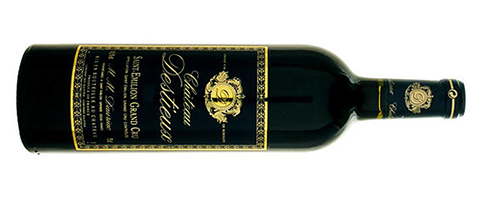
(case prices)
Montlisse St-Émilion Grand Cru 2019
$395
Destieux St-Émilion Grand Cru Classé 2019
$895
Destieux St-Émilion Grand Cru Classé 2016
$995
Jaques Robin
Côtes de Bar, Champagne
The Côtes des Bar is a ninety minute drive southeast of the rest of Champagne – geographically it’s closer to Chablis than Epernay. Its soils contain a high degree of clay mixed with Kimmeridgienne limestone (the same as in Chablis), and the terroir is beautifully suited to Champagnes made from Pinot Noir. Our producer here, Jacques Robin, produces delicious cuvées entirely by hand – they’re accessible, characterful, and wine-first. Robin’s pinot cuvées are friendly, gourmand, and delicious, with mouthfilling textures. Both wines on offer in this issue will be familiar. Secret de Sorbée is Robin’s pure Pinot Noir non-vintage Champagne, and majority of the current release is from the 2019 vintage. It’s as beautiful as ever, and maybe more so. The nose is deep and delicious, with loads of depth and earthy richness. The barrel aging is apparent, resulting in toasty notes with the fruit. Look for raspberry jam alongside buttered toast and violets. The mouth is plush and palate-coating, showing plum, butter, and minerals. It’s a perfect aperitif wine, round and delicious on its own. Whenever we open this wine, we promptly run out. The 750s are $43.75, so at less than $9 a glass you won’t need much excuse to open one. Robin’s vintage cuvée is called Kimmerdigienne, a nod to the famous limestone in the local soil. This is our third importation of the 2012 – it’s become a real favorite among readers, and it’s only getting better. The nose is a stunner, with notes of almonds, apricots, praline, and chalk. The mouth is delicious and complex, with notes of seashell, lemon zest, kiwi, brioche and vanilla. The 2012 has 6g dosage, and the mouthfeel is concentrated and chewy.We think will impress just about anyone with a taste for bubbles.
(case prices)
Champagne “Secret de Sorbée” NV
$525
Champagne “Kimméridgienne” 2012
$895
La Briccolina
Barolo, Piedmont, Italy
Several years ago, based on a tip from a Boston area Master of Wine, we contacted La Briccolina, a tiny family-run source in the heart of Barolo. As devotees of Burgundian Pinot Noir we’ve always been intrigued by Nebbiolo from Piedmont – an analogous thin-skinned varietal grown at its northern limit and capable of tremendous complexity and elegance. We’ve been searching for a Barolo for years, and after some fits and starts are delighted to have finally landed one. La Briccolina is the product of the Grasso family who have grown grapes here for a century, but only recently started bottling their own wine. They produce a single cuvée, all from the Serralunga d’Alba terroir on the eastern side of the Barolo appellation. The soils are compact marls and sandstone with very high iron content, resulting in firm, mineral-driven wines of real character. We’re excited to offer the 2020 Barolo from Briccolina. The nose is exquisite – cherries and spices explode from the glass with notes of licorice, plum, lavender, cedar and mocha. The mouth is refined and pretty rather than big and tannic – with just half an hour in carafe it opens beautifully into a middleweight, delightful wine with notes of black cherry, iron, saline and dried roses. Antonio Galloni of Vinous calls Briccolina’s Barolos “very fine,” and writes that “a bright future lies ahead” for the estate. He loved the 2020, awarding 93 points and finding it “soft, fruity and charming, all of which make it a fine choice for drinking now and over the next decade.” We had sworn off adding new sources for a while, but this opportunity (and this wine) was just too good to pass up.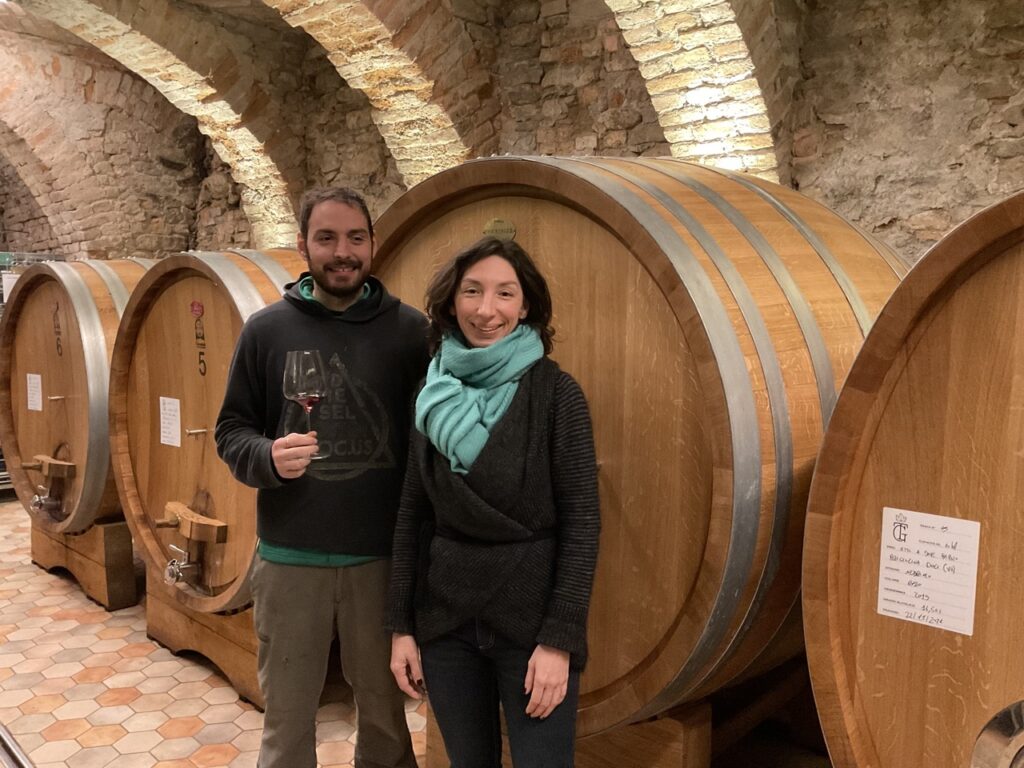

(case prices)
Barolo 2020
$850
_____________________________ We expect these wines in January/February 2026 If you have any trouble submitting the new order form, you can always email us your order. Or give us a call with questions: 617-249-3657, or tom@ansoniawines.com The deadline to place orders for this issue is: SUNDAY, NOVEMBER 16. Questions? Need advice? Call us: (617) 249-3657. OPTIONS FOR GETTING YOUR ORDERS Pick-up near Philadelphia. We’re pleased to restart our PA pickup option. Wines ordered for PA pickup will be available December, depending on temperatures. Email us for more details. Shipping elsewhere. In most states we can arrange for shipping at an additional cost that varies by location ($4.50 per bottle to the addresses west of Chicago; $3.50 per bottle east of Chicago). If shipping interests you, let us know the state and we will figure out if it can be done.
Pick-up in Massachusetts. We store our inventory at our new warehouse in Newton: 12 Hawthorn St, Newton MA 02458. Futures customers can pick up their orders here during Saturday open hours, or by appointment.
